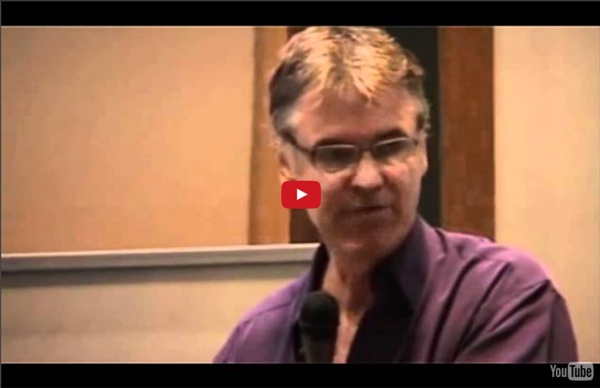



http://www.youtube.com/watch?v=3pD1DFTNQf4
Related: Instruction expliciteExplicit Teaching: A Lesson Structure That Delivers Results How should you organise your lessons? What lesson structure should you adopt? Your answer to these questions will have a profound effect on how successful your lessons will be. There are many options available. What works best This page has now been revised (May 2010) in the light of John Hattie's recent apparently definitive work Visible Learning; a synthesis of over 800 meta-analyses relating to achievement (London; Routledge, 2009). The first thing to change has been the title, which used to be "What works and what doesn't". Hattie points out that in education most things work, more or less. A Blog for Principals and Teachers - School Matters Confessions of a Former SAT Hater Ask a progressive educator about standardized tests, and more often than not you will receive a negative response. Ask more specifically about the SATs, and you... The SAT Controversy The news that the SAT’s will be modified to more appropriately accord with today’s high school academic experience has been met with both strong approval... Charter Schools: Bipartisanship Rises Up in Washington DC!
Teacher credibility: why it matters and how to build it DEAD POETS SOCIETY, Robin Williams, 1989 When your students view you as a credible teacher, they are more likely to do well in school. According to John Hattie’s latest results (2016), teacher credibility has a massive impact (d = 0.9) on the subsequent learning that happens in the classroom. To put this in perspective, teacher credibility has more than twice the impact of student motivation. This doesn’t mean that student motivation is not important – it is.
Making learning Visible (John Hattie) Auckland University Professor John Hattie has recently authored a study, based on research into 83 million students, studying effective teachers around the world and has come up with some reassuring results for creative teachers. It's all about trusting relationships and 'oodles of feedback'. Note - it is not about national testing, our government's highly unoriginal plan.
Would You Let Your Baby Do This? Posted by janet on Nov 23rd, 2011 There’s a certain ubiquitous playground apparatus that has always given me the willies. Luckily, my children never seemed drawn to it. My nervousness may well have made them wary. Even if we’ve trained ourselves to remain calm, just observe and spot, our children know. Their radar is that good. Lesson Goals: A Quick Way to Boost Student Achievement Great lessons start with a clear focus and lesson goals provide that focus. Do you want to help more of students to succeed? Would you like to push each child to new levels of personal excellence? Then try setting lesson goals every day. Research1 shows that teachers who are clear about what they want their students to learn as a result of each lesson have a higher impact on their students’ results. Focusing students’ attention and activity is a core part of evidence based teaching.
John Hattie's Eight Mind Frames For Teachers “Hattie’s 8 Mind frames”. Video scribe project by Cheryl Reynolds. In Visible Learning for Teachers (p. 159 ff) John Hattie claims that “the major argument in this book underlying powerful impacts in our schools relates to how we think! It is a set of mind frames that underpin our every action and decision in a school; it is a belief that we are evaluators, change agents, adaptive learning experts, seekers of feedback about our impact, engaged in dialogue and challenge, and developers of trust with all, and that we see opportunity in error, and are keen to spread the message about the power, fun, and impact that we have on learning.” John Hattie believes “that teachers and school leaders who develop these ways of thinking are more likely to have major impacts on student learning.” During the summer holidays we stumbled upon a great video made by Cheryl Reynolds, a senior lecturer at the University of Huddersfield.
How to Show Kids You Care Over the years, Search Institute has sold more than six million copies of 150 Ways to Show Kids You Care, a simple yet powerful poster. Like all of Search Institute’s work, the poster translates scientific research into simple, actionable ways that adults can make a positive difference in young people’s lives. A Search Institute team recently visited the Woodson Kindergarten Center in Austin, Minnesota, where the students helped us re-imagine the ideas on the poster. If you could use a quick reminder of why caring for young people is always worth your time, click here to meet the kindergarteners: In 2014, Search Institute will release important new studies and tools that put research to work on behalf of kids.
Top 10 Evidence Based Teaching Strategies Most teachers care about their students’ results. If you are reading this article, you are undoubtedly one of them. There is no doubt that teachers make a difference to how well their kids do at school. However, when you explore the thousands of research studies1 on the topic, it is apparent that some teaching strategies have far more impact than other teaching strategies do. Teachers toolbox - Professor John Hattie's Table of Effect Sizes Hattie says ‘effect sizes' are the best way of answering the question ‘what has the greatest influence on student learning?'. An effect-size of 1.0 is typically associated with: • advancing learners' achievement by one year, or improving the rate of learning by 50% • a correlation between some variable (e.g., amount of homework) and achievement of approximately .50 • A two grade leap in GCSE, e.g. from a C to an A grade